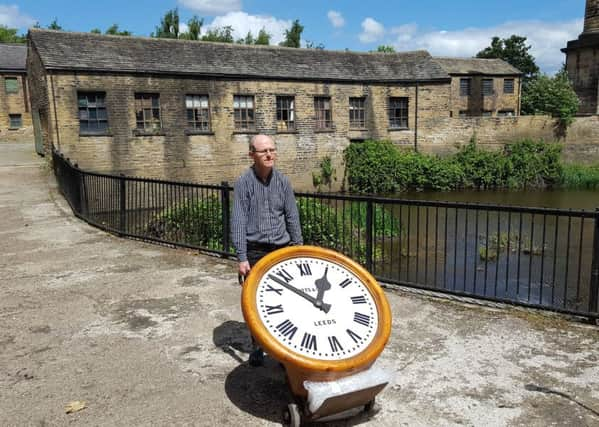Clock's final destination


The clock arrived at Leeds Industrial Museum having been purchased at auction from a private collector who had owned it since the 1970s. It will now go on display as part of the museum’s huge collection honouring the city’s industrial heritage.
Made by famous Leeds clockmakers Potts and Sons, the large, solid pine timepiece is around two-an-a-half feet wide and was installed in the circulating area at Morecambe Promenade station when it was rebuilt and reopened in 1907.
Advertisement
Hide AdAdvertisement
Hide AdThe station had been designed to cope with a huge influx of passengers travelling to Morecambe and other traditional costal tourist hotspots nearby and was built close to the old Midland hotel so holidaymakers, many of them from Yorkshire, could go straight there to stay.
Morecambe even became affectionately known as ‘Bradford on Sea’ because so many people travelled there from the other side of the Pennines.
In search of a suitably imposing and reliable clock, the station’s designers turned to renowned clockmakers Potts and Sons, a family business that had been established in Pudsey in 1833 by William Potts.
The company had continued to grow, supplying clocks for many public buildings across Yorkshire and beyond, with a total of 1,568 installed at locations including at Leeds Town Hall and Leeds Corn Exchange.John McGoldrick, Leeds Museums and Galleries’ curator of industrial history, said: “From humble beginnings, Potts and Sons became something of a standard bearer for clocks on public buildings, with their timepieces adorning cathedrals, churches, town halls, schools, engineering works and railways both at home and abroad.
Advertisement
Hide AdAdvertisement
Hide Ad“Tens of thousands of people from different eras must have looked at this particular clock while they enjoyed a traditional break and it’s wonderful to think that such a proud piece of our city’s local history played a part in the fun they had by the seaside.”
Councillor Brian Selby, Leeds City Council’s lead member for museums and galleries, said: “It’s fabulous news that this clock is returning home to Leeds after all those years at the heart of such a popular seaside destination.”
A spokesman for Leeds City Council said the clock is currently being restored but should be on display in the museum later this year.